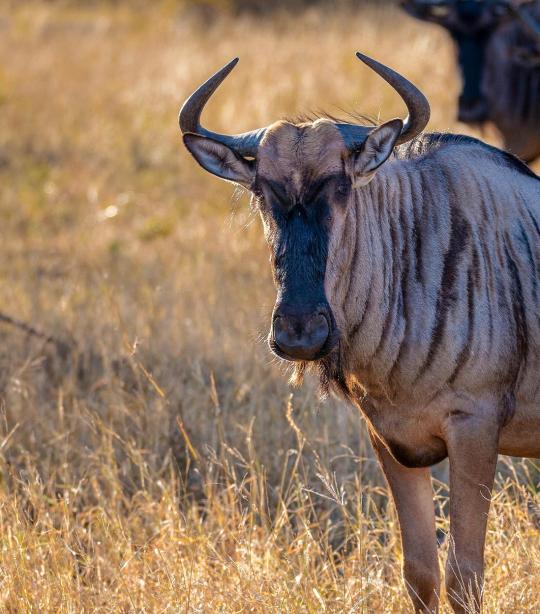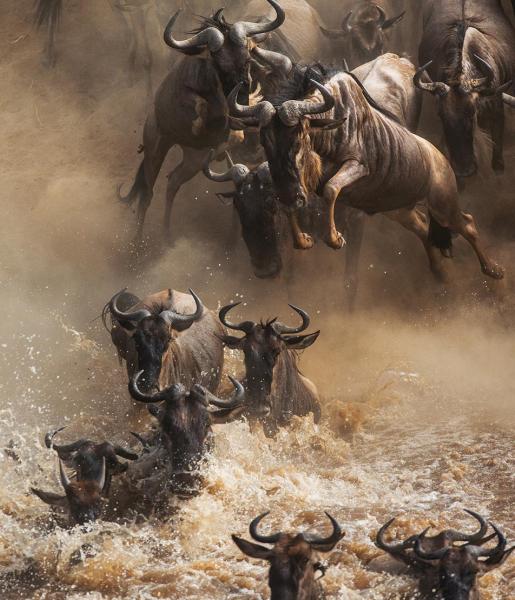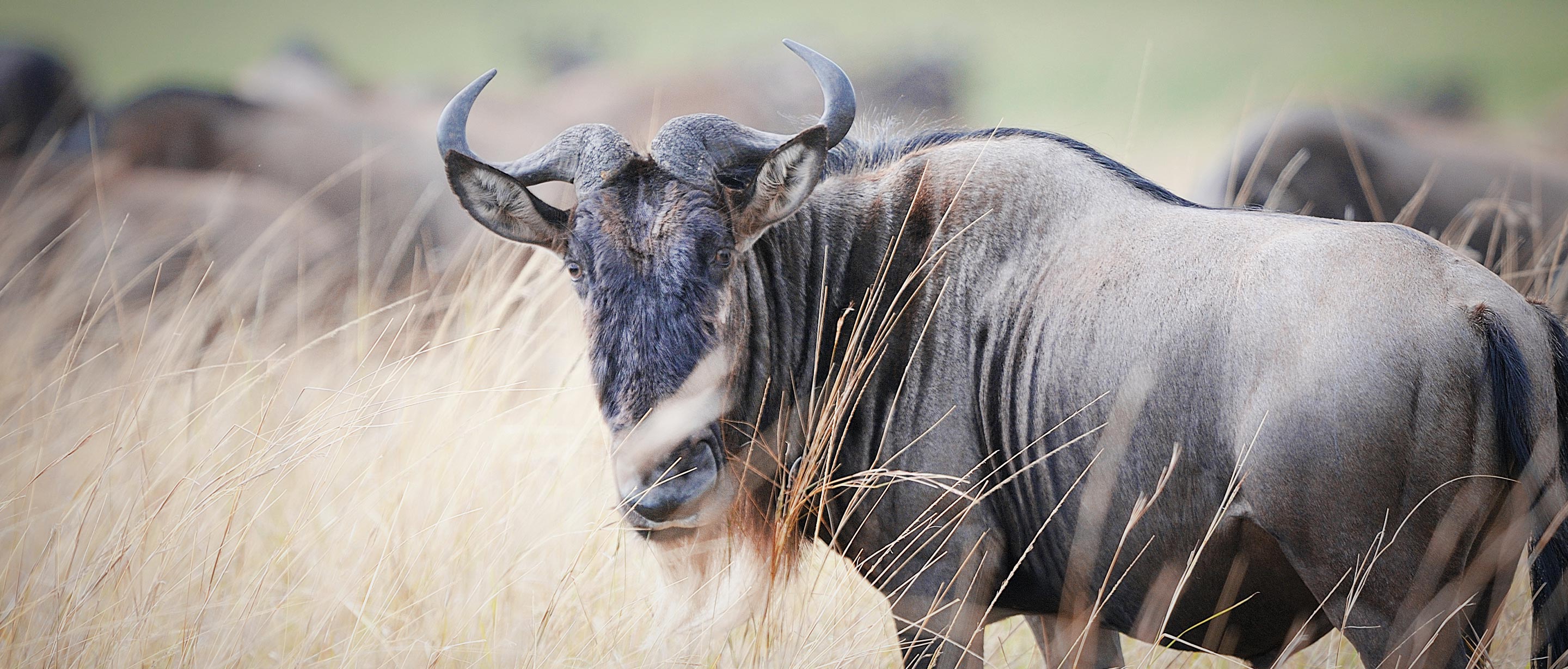What are wildebeest?
Also known as the gnu, the wildebeest is a member of the antelope family. They have a large, box-like head with curving horns. The front end of their body is heavily built, while the hindquarters are slender with spindly legs. They have a gray coat and a black mane as well as a beard that can be black or white. There are several races of wildebeest. The species forming the large herds of the Serengeti-Mara ecosystem of Kenya and Tanzania is known as the western white-bearded wildebeest, while the eastern white-bearded races inhabit Kenya and Tanzania east of the Gregory Rift. The brindled, or blue, race occurs south of the Zambezi River.
118 to 270 kilograms (260-595 pounds)
123 centimeters in length (48 inches)
20 years in the wild
Herbivorous
8.5 months

Challenges
Habitat fragmentation poses a great threat to wildebeest.
Their habitat is threatened by fragmentation, which is caused when land is fenced off for agriculture. While they are widespread and abundant in certain areas, the spread of civilization and agriculture, the reduction of water sources, and poaching are threatening this iconic species’ survival.
Solutions
Our solutions to ensuring the wildebeest continues to thrive:
AWF works with government entities to help plan and propose alternative solutions to habitat fragmentation. AWF provides its scientists and researchers as resources to assist in proper planning to ensure a balance between modernization and conservation.
We engage communities to help with agricultural planning to provide tools and techniques for sustainable agricultural growth. By providing these resources, AWF can minimize the impact on local wildlife while helping to maximize food security and income for people.


Behaviors
They are noisy creatures
Bulls have a wide array of loud vocalizations, from moans to explosive snorts.
The majority of female wildebeest give birth around the same time.
About 80 percent of the females calve within the same two- to three-week period, creating a glut for predators and enabling more calves to survive the crucial first few weeks.
Diet
Wildebeest are driven by their appetites.
These large mammals are continually on the move, as they seek favorable supplies of grass and water. The famous Serengeti population of wildebeest is a very large nomadic group. This group makes a migratory circle of 800 to 1,610 kilometers (500 to 1,000 miles) each year, beginning right after the calving season at the start of the year. They are relentless in their advance and many are injured, lost (especially calves), or killed. By the end of the dry season, the wildebeest have almost exhausted the grazing lands and return to the Serengeti plains as the rains begin.
Habitats
Where do wildebeest live?
Wildebeest can be found in the plains and acacia savannas of Eastern Africa.



